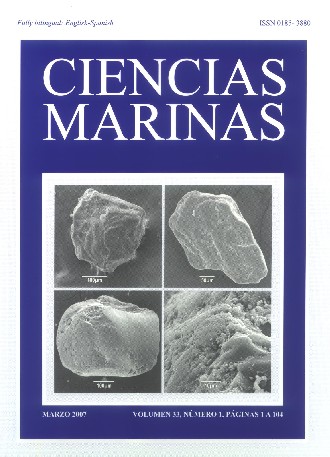Quality parameters of spiny lobster (Panulirus interruptus) tails as affected by short-term emersion at two different air temperatures
Main Article Content
Abstract
The spiny lobster, Panulirus interruptus, is a valuable crustacean and most of its production is marketed live. In the northern fisheries of Baja California, Mexico, the animals are exposed to short-term emersion at different air temperatures during the live marketing procedures. This work evaluates the effect of short-term emersion (up to 10 h) at two air temperatures (7ºC and 20ºC) and of a 2-h recovery period on ATP, its related metabolites and some muscle quality parameters. Survival was 100% after all emersion times. No significant differences were found either in the adenylic energetic charge or in the levels of ATP and its related metabolites. The highest concentrations were found for AMP, IMP and INO, while ATP had the lowest levels. Muscle quality parameters such as water holding capacity and shear force remained similar to the control values. Although pH decreased slightly with emersion, it was very close to the control values after the 2-h recovery period. The overall results suggest that P. interruptus may perform physiological compensatory work after 10 h emersion even at 20ºC without significantly affecting the muscle quality.
Downloads
Article Details
This is an open access article distributed under a Creative Commons Attribution 4.0 License, which allows you to share and adapt the work, as long as you give appropriate credit to the original author(s) and the source, provide a link to the Creative Commons license, and indicate if changes were made. Figures, tables and other elements in the article are included in the article’s CC BY 4.0 license, unless otherwise indicated. The journal title is protected by copyrights and not subject to this license. Full license deed can be viewed here.

